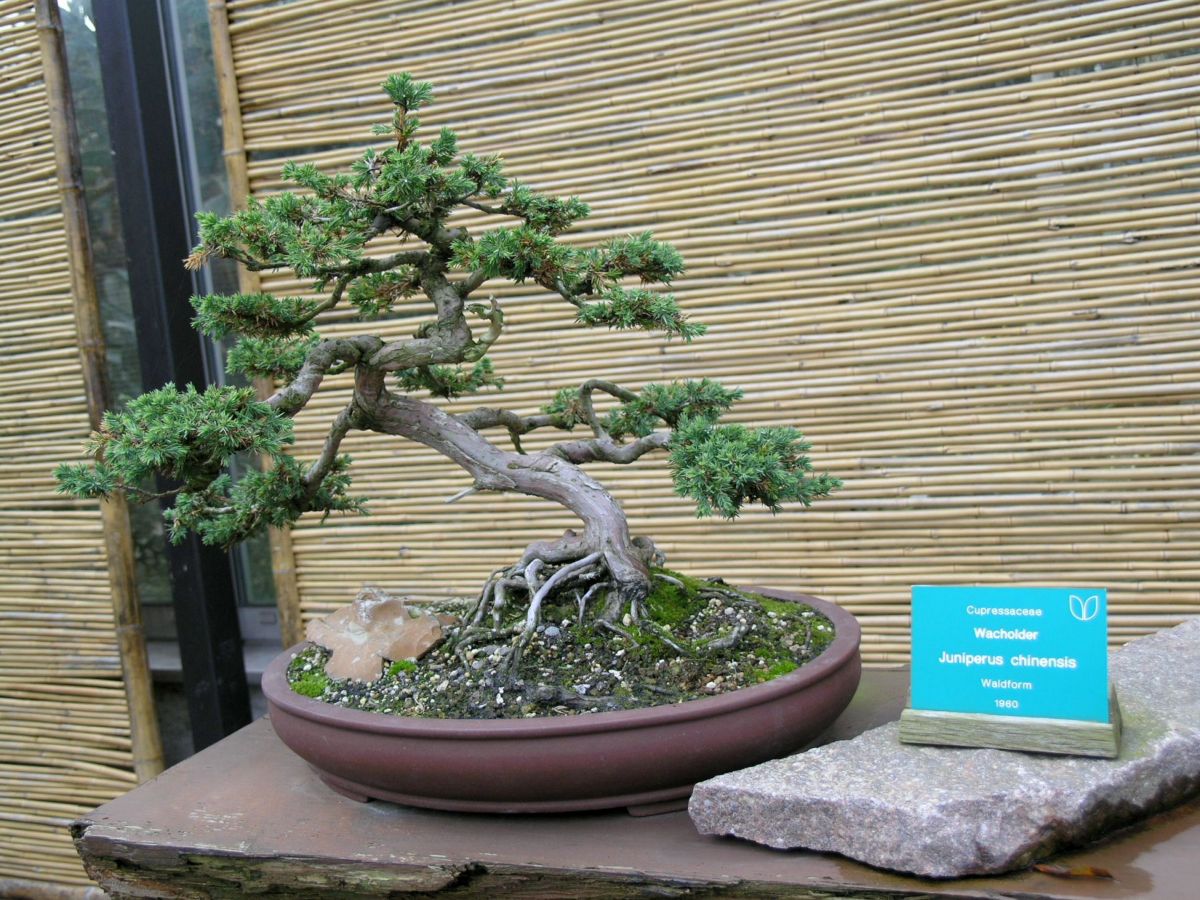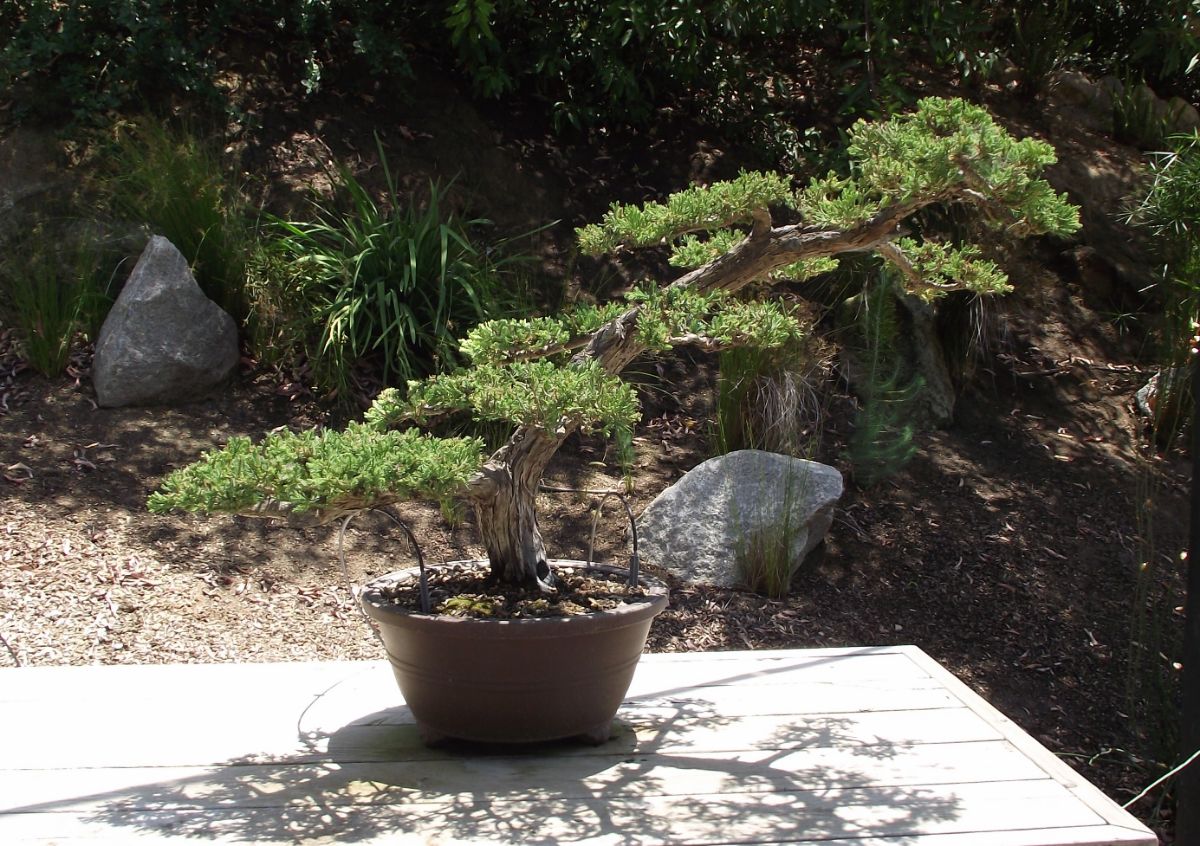
Within the world of bonsai, there are some specimens that, due to their size or for everything that can be achieved with them, are highly appreciated, hence its high price in some cases. This is what happens with the Juniperus bonsai.
If you want to know more things about this bonsai, such as its characteristics, care or even where to buy it, then we help you to know it thoroughly.
Juniperus bonsai characteristics

The first thing you should know about the juniperus bonsai is that its genus, the Juniperus or Junípero, It encompasses about 50-70 different species. The most common and well-known in the world of bonsai are Juniperus chinensis (Chinese juniper), Juniperus sargentii (Japanese shimpaku) and Juniperus procumbens (sonare).
Actually, we could say that this genre classifies the species that it encompasses into two large groups:
- On one hand, those with foliage in the form of scales. These usually have foliage in shades of green, yellow, blue and gray. To the touch they are much softer and above all they are somewhat more rounded (they are much better to be able to work with them and shape them).
- For another, those with needle-like foliage. These, unlike the previous ones, are characterized by very sharp and sharp needles, which can range from dark green to lighter. This implies that, to the touch, they may not be pleasant at all.
They are evergreen, which means that they will stay "green" throughout the year. In addition, they are more of exterior. Many times these bonsai are placed indoors and end up dying due to lack of light and other needs.
They are mini trees that are characterized by be very long-lived (if you take good care of it, it can last for years and years, even leave it as an inheritance) and also very resistant to pests and diseases.
Care

Like any type of bonsai, having a miniature of a real tree makes them more "delicate" in their needs and you must know in depth what they need so that your specimen does not die.
In this sense, the care that you must provide to the Juniperus bonsai are the following:
Location
Despite the fact that bonsai are sold as "trees for the home", the truth is that the vast majority are outdoors. In the case of juniperus bonsai this is totally outdoor; you can't have it inside the house.
It needs lots and lots of light to develop properly. In addition, it will offer you a change in its foliage, going from intense green in spring and summer to a duller one, and even brown, in winter (it is a protection against frost).
Temperature
It tolerates high temperatures well, although, being small specimens, It is not recommended to put them directly in the sun if you live in an area where it is quite hot. As for the cold and frost, you can withstand up to -10 degrees. Beyond that, it is advisable to protect it to avoid problems with the roots or foliage.
Irrigation
Watering is one of the most important aspects of caring for a juniper bonsai. Does not tolerate excesses, not even moisture in the substrate to use. Therefore, you have to water it very little.
When transplanting, irrigation, if it is due to environmental humidity, is much better because it helps the tree to recover and activate in its new pot.
Subscriber
Like any bonsai, or plant in general, a paid in the growing season, that is, from spring to summer. You can use liquid fertilizer, throwing it into the irrigation water once a week; or fertilizer in solid form, applying it to the surface of the soil and watering afterwards so that it absorbs the nutrients.
Pruning
The pruning of this Juniperus bonsai is not as common as with other specimens, and it is very slow growth, so pruning may only be carried out once a year or even every so often.
It usually consists of pinch the shoots so that they do not come out of the formation that you have given to your bonsai.
Obviously, dry, dead or weak branches of the tree will also have to be removed. But you must bear in mind that you should not think of a Juniperus bonsai as a hedge; They are not the same, although a priori it may seem so. In other words, you should never cut the growth tips, because that will only make it turn brown in the long run and stop growing.
Transplant
The transplant of the juniperus bonsai is carried out always every two years in the youngest specimens and, when these are already long-lived, it can take much longer.
To do this, the soil to be used in these cases must be a mixture of soil and drainage. It should be a thick drainage, such as akadama, to help the roots to be aerated.
In addition, it is not recommended that you prune the roots too much since it does not take it well at all and you can end up with your specimen.
Plagues and diseases
If you provide all the necessary care to this bonsai, it is normal for it to withstand any type of pest or disease. Now, that doesn't mean they can't be attacked; actually yes.
With regard to pests, the usual ones are aphids, moths, mites and scale insects.
Where to buy a juniper bonsai

Finally, if after everything you have read about the juniperus bonsai it has been enough for you to get the bug for this specimen and you want to get one, our recommendation is that you go to specialized centers.
In stores such as supermarkets it is very difficult, if not almost impossible, for them to bring these specimens, and in this case it will be the specialized nurseries that will have these bonsai.
Of course, keep in mind that they are trees that are going to need a series of care and that, Although it is said that they are ideal for beginners, the truth is that it is not easy to take care of them (and it can dry out if you don't control its needs in time). Still, it's one of the nicest to have.
Do you dare with a juniperus bonsai?